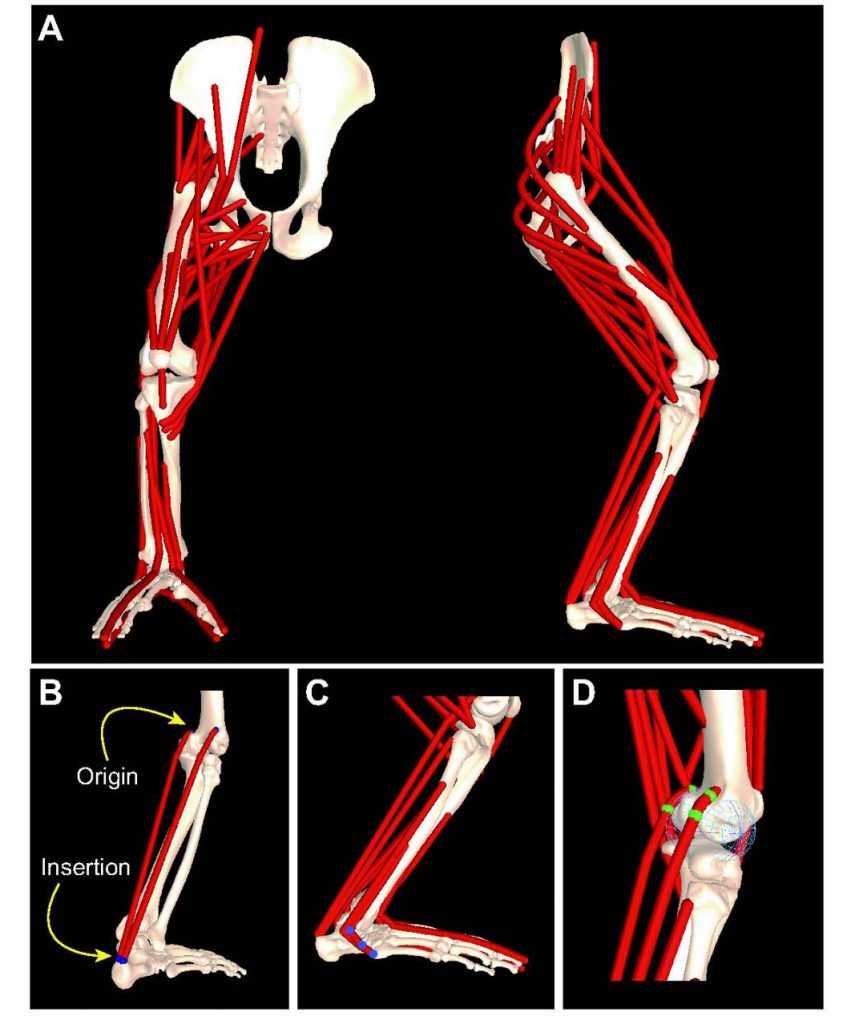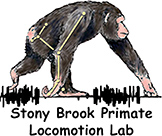Chimpanzee computational musculoskeletal model/simulations for bipedal walking
The model of the chimpanzee pelvis and hind limb has been published in the following paper: A three-dimensional musculoskeletal model of the chimpanzee (Pan troglodytes) pelvis and hind limb (O’Neill et al., 2013). The abstract of this paper is as follows:
Musculoskeletal models have become important tools for studying a range of muscle-driven movements. However, most work has been in modern humans, with few applications in other species. Chimpanzees are facultative bipeds and our closest living relatives, and have provided numerous important insights into our own evolution. A chimpanzee musculoskeletal model would allow integration across a wide range of laboratory-based experimental data, providing new insights into the determinants of their locomotor performance capabilities, as well as the origins and evolution of human bipedalism. Here, we described a detailed three-dimensional (3D) musculoskeletal model of the chimpanzee pelvis and hind limb. The model includes geometric representations of bones and joints, as well as 35 muscle–tendon units that were represented using 44 Hill-type muscle models. Muscle architecture data, such as muscle masses, fascicle lengths and pennation angles, were drawn from literature sources. The model permits calculation of 3D muscle moment arms, muscle–tendon lengths and isometric muscle forces over a wide range of joint positions. Muscle–tendon moment arms predicted by the model were generally in good agreement with tendon-excursion estimates from cadaveric specimens. Sensitivity analyses provided information on the parameters that model predictions are most and least sensitive to, which offers important context for interpreting future results obtained with the model. Comparisons with a similar human musculoskeletal model indicate that chimpanzees are better suited for force production over a larger range of joint positions than humans. This study represents an important step in understanding the integrated function of the neuromusculoskeletal systems in chimpanzee locomotion. (Journal of Experimental Biology 216, 3709-3723)

Three-dimensional musculoskeletal model of the chimpanzee pelvis and hind limb. From O’Neill et al., 2013, Fig. 1
An OpenSim version of the chimpanzee pelvis and hind limb model may be downloaded here: https://simtk.org/projects/chimphindlimb

